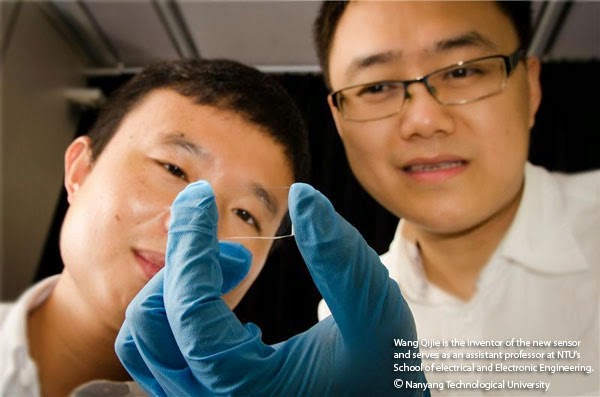We all are used to having our cameras on flash mode whenever we try to capture a picture-perfect moment in places where there is minimal lighting.
What if you have no flash? That wouldn’t be a problem now!
A new imaging sensor is currently being developed to make photographers take clear, sharp and high quality photographs possible even in dim lighting.
 This new sensor was created by a team of researchers at Nanyang Technological University (NTU) in Singapore. It was made to be highly sensitive to both visible and infrared light which makes it so that it could be used in family Nikon to surveillance and satellite cameras and to what comes in between.
This new sensor was created by a team of researchers at Nanyang Technological University (NTU) in Singapore. It was made to be highly sensitive to both visible and infrared light which makes it so that it could be used in family Nikon to surveillance and satellite cameras and to what comes in between.
It is said that the sensor in this camera gets its high photo response from its innovative structure and design and is a thousand times more sensitive to light than the imaging sensors of most of the cameras today.
It is made of grapheme, which is a strong carbon compound that has a honeycomb structure– flexible as a rubber, more conductive than silicon and better at heat resistance than a diamond.
Graphene had already earned a well reputation as the building material of the future. The work on the compound, which is a one atom-thick layer of the mineral graphite, by Andre Geim and Konstantin Novoselov garnered and took home the Nobel Prize for Physics in 2010.
Wang Qijie is the inventor of the new sensor and serves as an assistant professor at NTU’s School of electrical and Electronic Engineering.
Qijie stated that this was the first time such a broad-spectrum, high photosensitive sensor has been made with the use of pure grapheme.
The inventor of the new sensor, Wang Qijie, an assistant professor at NTU’s School of Electrical and Electronic Engineering, said this is the first time that a broad-spectrum, high photosensitive sensor has been made using pure graphene.
He also added that the key to his new sensor was “light-trapping” nanostructures that use grapheme as a base. These nanostructures hold onto light-generated electron particles much longer than any other conventional sensors, resulting to stronger electrical signals which can be processed into an image, like a photograph captured by a digital camera.


